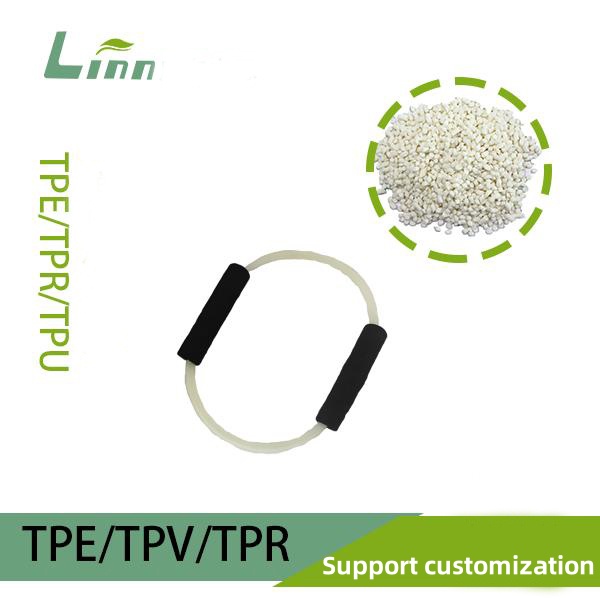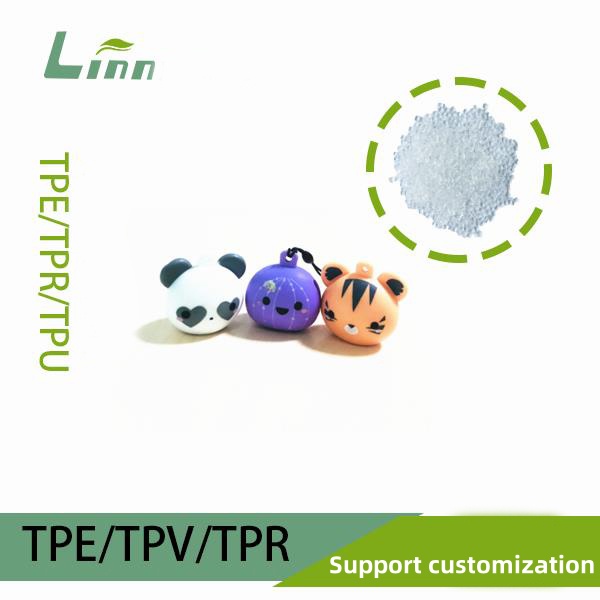Having worked in the high-polymer materials industry for over a decade, I’ve fielded countless questions about thermoplastic elastomers (TPE), from their processing quirks to their real-world performance. One question that pops up often, especially from engineers and quality control teams, is: “Why do we need to test TPE for copper corrosion?” It’s a topic that might seem niche but is critical in applications where TPE interacts with metals. In this article, I’ll walk you through the reasons behind copper corrosion testing for TPE, why it matters, and how it impacts product reliability. Drawing on my experience, I hope to make this complex subject clear and actionable for you.
Understanding TPE and Its Applications
Before diving into copper corrosion, let’s set the stage with a quick refresher on TPE. Thermoplastic elastomers are versatile materials that blend the elasticity of rubber with the moldability of plastics. They’re soft, flexible, and recyclable, making them a go-to choice for everything from cable insulation and automotive seals to medical tubing and consumer electronics.
What makes TPE special is its molecular structure—a mix of hard segments (like polystyrene) and soft segments (like polybutadiene or polyether). This gives TPE its unique balance of flexibility and strength. But when TPE is used in environments where it contacts metals, especially copper, its chemical behavior becomes a key concern. That’s where copper corrosion testing comes in.

Why Test TPE for Copper Corrosion?
So, why bother with copper corrosion tests? From my years in the field, I’ve seen this test play a pivotal role in ensuring product durability and safety. Below, I’ll break down the core reasons, grounded in practical insights.
1. Preventing Material Degradation in Metal-Contact Applications
TPE is often used in products that directly contact metals, such as wire and cable insulation, connectors, or sealing gaskets. Copper, being a common conductor in electronics and automotive wiring, is frequently paired with TPE. However, certain TPE formulations—especially those with additives like stabilizers, plasticizers, or flame retardants—can release compounds that react with copper.
These reactions can cause corrosion, forming copper oxides or sulfides that weaken the metal over time. Imagine a car’s wiring harness: if the TPE insulation corrodes the copper wires, it could lead to electrical failures, short circuits, or even safety hazards. I’ve seen cases where untested TPE caused premature wire degradation, costing manufacturers thousands in recalls. Copper corrosion testing ensures TPE won’t harm the metal it touches, safeguarding long-term performance.
2. Meeting Industry Standards and Regulations
In industries like automotive, aerospace, and electronics, material compatibility is non-negotiable. Standards such as ASTM D4300 for wire and cable materials or ISO 6722 for automotive wiring often require copper corrosion testing to verify that insulation materials like TPE won’t degrade conductive metals.

I recall working with a client supplying TPE for automotive wiring. Their customer demanded compliance with ISO 6722, which includes a copper corrosion test to ensure the insulation wouldn’t compromise the wiring under heat, humidity, or chemical exposure. Passing the test wasn’t just about meeting specs—it built trust with the buyer and avoided costly rejections. Testing aligns TPE with regulatory and client expectations, ensuring market acceptance.
3. Evaluating Additives and Formulation Stability
TPE isn’t a one-size-fits-all material. Its properties depend heavily on its formulation, which often includes additives like:
Plasticizers for flexibility.
Stabilizers to resist heat or UV.
Flame retardants for safety.
Fillers to reduce costs.
Some of these additives, particularly sulfur-based stabilizers or halogenated flame retardants, can release corrosive compounds when heated or aged. These compounds may not affect the TPE itself but can attack copper, forming green patinas or brittle surfaces.
I once consulted on a project where a TPE cable insulation failed a corrosion test because of a sulfur-containing stabilizer. The supplier hadn’t anticipated that high temperatures during use would trigger sulfur release, corroding the copper conductor. Switching to a non-sulfur stabilizer solved the issue. Copper corrosion testing reveals how a TPE’s formulation behaves over time, helping manufacturers catch problems early.

4. Ensuring Long-Term Reliability in Harsh Environments
TPE products often operate in tough conditions—think high temperatures, humidity, or exposure to oils and chemicals. These environments can accelerate chemical interactions between TPE and copper. For example, in under-hood automotive applications, TPE-insulated wires face heat cycles up to 125°C, which can amplify corrosion risks if the material isn’t properly vetted.
Copper corrosion testing simulates these conditions, often using accelerated aging protocols like 168 hours at 100°C while in contact with copper. This helps predict how the TPE will perform over years of use. I’ve seen firsthand how a well-tested TPE can outlast its untested counterparts, saving end-users from failures in critical systems like medical devices or industrial sensors.
5. Avoiding Costly Failures and Liability
Let’s be real—product failures are expensive. A corroded copper component in a consumer device, like a smartphone charging cable, can lead to poor performance, customer complaints, or worse, safety risks like electrical fires. Manufacturers who skip copper corrosion testing might save a few bucks upfront but risk massive costs down the line, from warranty claims to reputational damage.
I worked with a small electronics supplier once who learned this the hard way. Their TPE-coated connectors failed in the field due to copper corrosion, leading to a major recall. A simple corrosion test during development could’ve caught the issue. Testing is an investment in reliability, protecting both the manufacturer and the end-user.

How Is Copper Corrosion Testing Done?
Now that we’ve covered why, let’s talk how. Copper corrosion testing for TPE isn’t overly complex, but it’s precise. Here’s a rundown of the typical process, based on standards like ASTM D4300 or industry practices:
Sample Preparation: A TPE sample (e.g., a strip or molded piece) is placed in direct contact with a polished copper strip or wire. The copper is cleaned to remove oils or oxides, ensuring accurate results.
Controlled Environment: The TPE-copper assembly is exposed to specific conditions, often 100°C for 168 hours in an oven, sometimes with added humidity or chemical stressors to mimic real-world use.
Evaluation: After exposure, the copper is inspected for signs of corrosion, such as discoloration, pitting, or green patina. Advanced tests may use microscopy or chemical analysis to quantify corrosion products.
Grading: Results are compared to a standard scale (e.g., ASTM’s corrosion levels) or client specs. Minimal to no corrosion is typically required for a pass.
I’ve overseen these tests in labs and can vouch for their reliability. They’re straightforward but reveal critical insights about material compatibility.
Factors Influencing TPE’s Corrosion Potential
Not all TPEs behave the same way with copper. Here’s a table summarizing key factors that affect a TPE’s corrosion potential, based on my observations.
| Factor | Impact on Corrosion | Mitigation Strategies |
|---|---|---|
| Additive Type | Sulfur, halogens, or acidic stabilizers can release corrosive compounds. | Use non-corrosive additives like phosphate-based stabilizers. |
| Processing Conditions | High temperatures during molding may volatilize additives, increasing risk. | Optimize processing to minimize overheating; follow TDS guidelines. |
| Environmental Exposure | Heat, humidity, or chemicals accelerate corrosion reactions. | Test under simulated end-use conditions (e.g., high humidity or temperature). |
| TPE Base Polymer | SEBS-based TPEs are often less corrosive than SBS due to better stability. | Choose base polymers suited for metal contact applications. |
| Copper Surface | Impurities or coatings on copper can influence corrosion behavior. | Use high-purity, cleaned copper for testing and production. |
This table isn’t exhaustive, but it highlights how formulation and context shape TPE’s interaction with copper.
Practical Steps to Minimize Corrosion Risks
From my experience, preventing copper corrosion starts with smart material and process choices. Here are actionable steps to ensure your TPE performs well:
1. Choose the Right TPE Formulation
Not all TPEs are created equal. If your product involves copper contact, ask your supplier for low-corrosion grades. These are formulated with non-reactive additives, like phosphate-based stabilizers instead of sulfur. I always recommend requesting a material safety data sheet (MSDS) and technical data sheet (TDS) to verify compatibility.

2. Conduct Pre-Production Testing
Don’t skip the copper corrosion test, even for seemingly “safe” TPEs. Run trials under conditions that match your product’s end-use, like elevated temperatures or chemical exposure. I’ve seen manufacturers save millions by catching issues before mass production.
3. Optimize Processing Parameters
High processing temperatures or prolonged heat exposure can volatilize additives, increasing corrosion risk. Stick to the recommended settings in the TDS. For example, if the TDS suggests 180°C-220°C for extrusion, avoid pushing it to 250°C just to speed things up.
4. Collaborate with Suppliers
Your TPE supplier is your best ally. Share your application details—like whether the TPE will contact copper in a humid environment—and ask for tailored recommendations. I’ve had suppliers reformulate TPEs for specific projects, dramatically improving performance.
5. Monitor Field Performance
Even with testing, real-world surprises can happen. Track your product’s performance post-launch, especially in harsh conditions. If corrosion issues arise, revisit the formulation or test conditions. Continuous improvement is key.
Real-World Examples of Copper Corrosion Issues
To bring this to life, let me share two stories from my career that highlight why copper corrosion testing matters.
Case 1: Automotive Wiring Failure
A client producing TPE-insulated wiring for cars faced a nightmare when their cables failed in humid climates. The copper conductors showed green corrosion after just six months. Testing revealed that the TPE’s flame retardant released halogen compounds at high temperatures, attacking the copper. We switched to a halogen-free TPE and retested it under ISO 6722 conditions, ensuring no corrosion. The new cables lasted years without issues.

Case 2: Consumer Electronics Recall
Another time, I helped a startup making TPE-coated USB connectors. They skipped corrosion testing to cut costs, only to face a recall when users reported broken connections. Lab analysis showed the TPE’s sulfur-based stabilizer corroded the copper pins. A quick reformulation and corrosion test fixed the problem, but the lesson was costly. Testing upfront would’ve saved them millions.
These cases underscore that copper corrosion testing isn’t just a checkbox—it’s a safeguard against real-world failures.
Common Questions About TPE Copper Corrosion Testing
To wrap up, here are answers to frequent questions I hear, based on my work in the field.
1. Is copper corrosion testing mandatory for all TPE applications?
Not always, but it’s critical for applications involving direct copper contact, like wiring or connectors. Check industry standards (e.g., ASTM, ISO) or client specs to confirm requirements.
2. Can all TPEs pass a copper corrosion test?
No. Some formulations, especially those with sulfur or halogen additives, are prone to causing corrosion. Choose low-corrosion grades and verify with testing.
3. How long does a copper corrosion test take?
Standard tests, like 168 hours at 100°C, take about a week. Accelerated protocols or custom conditions may vary. Plan ahead to avoid production delays.
4. What if my TPE fails the test?
Work with your supplier to reformulate the TPE, possibly by swapping additives or adjusting the base polymer. Retest until it passes, and double-check processing conditions.
5. Are there alternatives to copper in TPE applications?
Yes, metals like aluminum or silver-coated conductors can be less reactive, but copper’s cost and conductivity make it dominant. Testing ensures compatibility regardless.

Closing Thoughts
Why test TPE for copper corrosion? It boils down to ensuring your product lasts, performs safely, and meets expectations in demanding applications. As someone who’s seen both the triumphs and pitfalls of TPE use, I can’t stress enough how vital this test is for anything involving copper contact. It’s not just about avoiding corrosion—it’s about building trust, reliability, and quality into every product.
If you’re grappling with TPE selection, testing, or performance, I’m here to help. Drop your questions, and I’ll do my best to guide you with practical, field-tested advice. After all, in the world of high-polymers, we’re all learning and solving problems together.



